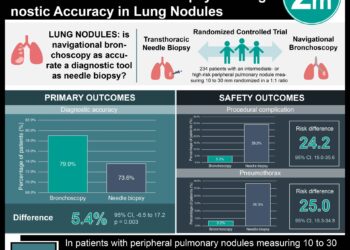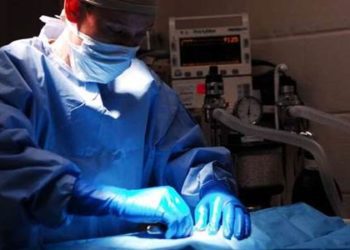Patient Basics: Large Core Needle Biopsy of the Breast
Originally published by Harvard Health.
What Is It?
A biopsy is a tissue sample removed from the body and examined under a microscope. In a breast biopsy, a doctor removes tissue from a suspicious area so that a pathologist can determine whether the tissue contains cancerous cells.
At one time, surgeons only performed biopsies by making an incision in the breast and removing the suspicious tissue along with some normal tissue from around it. These surgical biopsies leave scars and may change the size and shape of the breast.
Today, doctors can often use newer techniques. These include fine needle aspiration and core needle biopsy, which don’t leave scars or change the shape of the breast. This is a significant advantage, because four out of five women who have biopsies do not have cancer.
If your health care facility does not perform needle biopsies, ask to be referred to one that does, unless there’s a reason why this procedure is inappropriate for you.
What It’s Used For
A large core needle biopsy uses a larger needle than the one used for a fine needle aspiration. The larger needle means that more tissue can be removed and examined. Large core needle biopsy is often performed using either x-rays or ultrasound, to help the doctor be sure that the tip of the needle has reached the suspicious area.
Since the early 1990s, large core needle biopsy has been the diagnostic method of choice. It can help evaluate abnormalities seen on a mammogram that cannot be felt by hand.
Core needle biopsy may not be suitable if you have
- an irregularity close to the chest wall, the nipple, or the surface of the breast
- certain types of calcium deposits in the area of concern
- very small breasts.
In these situations, it can be difficult to get accurate results from a core needle biopsy. Your doctor may recommend a surgical biopsy instead.
Preparation
If you take a blood thinner, aspirin, or a non-steroidal anti-inflammatory drug (NSAID), you might have to stop using it for several days before the test, to avoid bleeding complications. If you are allergic to lidocaine or another local anesthetic, tell your doctor before having the test
How It’s Done
You wear a hospital gown open in the front. The core biopsy needle is about as thick as the tip of a pen. It usually is inserted into the breast through a tiny incision. Using x-rays or ultrasound images as a guide, or by feeling the lump, the doctor moves the needle into the area of concern. He or she extracts one or more tissue samples through the needle using suction from a syringe. (Often three to six samples are removed for analysis through the one puncture.)
If mammograms or ultrasound will guide insertion of the biopsy needle, the required equipment should be in the same room. You should feel pressure but not pain. This procedure takes only a few minutes.
Follow-Up
After the core needle biopsy, your doctor may put a bag of ice on the incision for 15 to 30 minutes. Most likely, you’ll resume normal activity almost immediately.
Examination of the biopsy sample usually requires several days. At centers with doctors experienced in performing biopsies, 65% of women are diagnosed with a benign condition; they can resume having annual mammograms. Another 25% have cancer or a precancerous condition and begin treatment. For the remaining 10%, results are inconclusive; in most cases, the next step is a surgical biopsy.
Risks
After the biopsy, you might have a small amount of bleeding or bruising and some breast soreness. This procedure leaves only a tiny dot for a scar.
When To Call a Professional
Because side effects are not expected, people typically need to call their doctors only for biopsy results.
Additional Information
American Cancer Society
1599 Clifton Road NE
Atlanta, GA 30329
Toll Free: 800-227-2345
www.cancer.org
Breastcancer.org
7 East Lancaster Avenue, 3rd Floor
Ardmore, PA 19003
http://www.breastcancer.org


